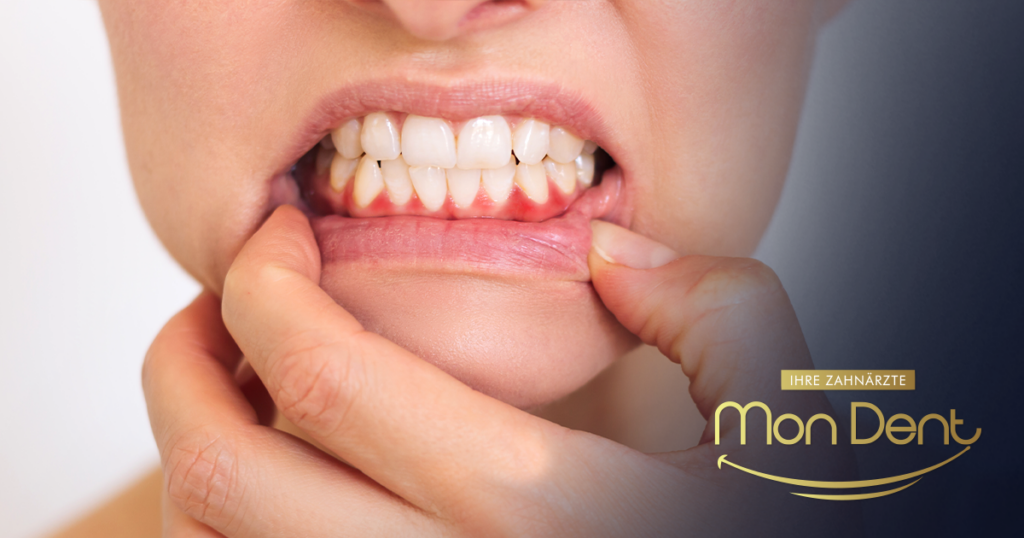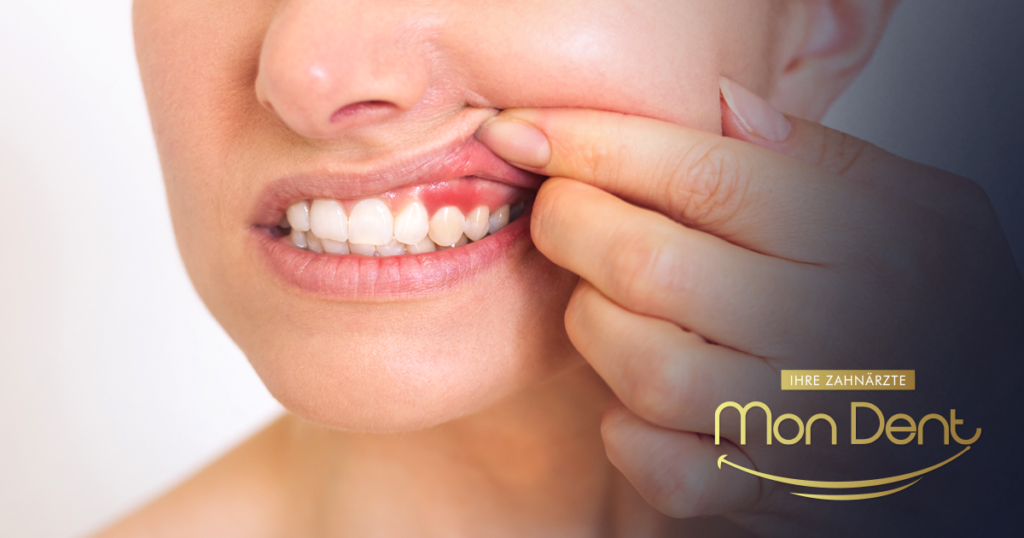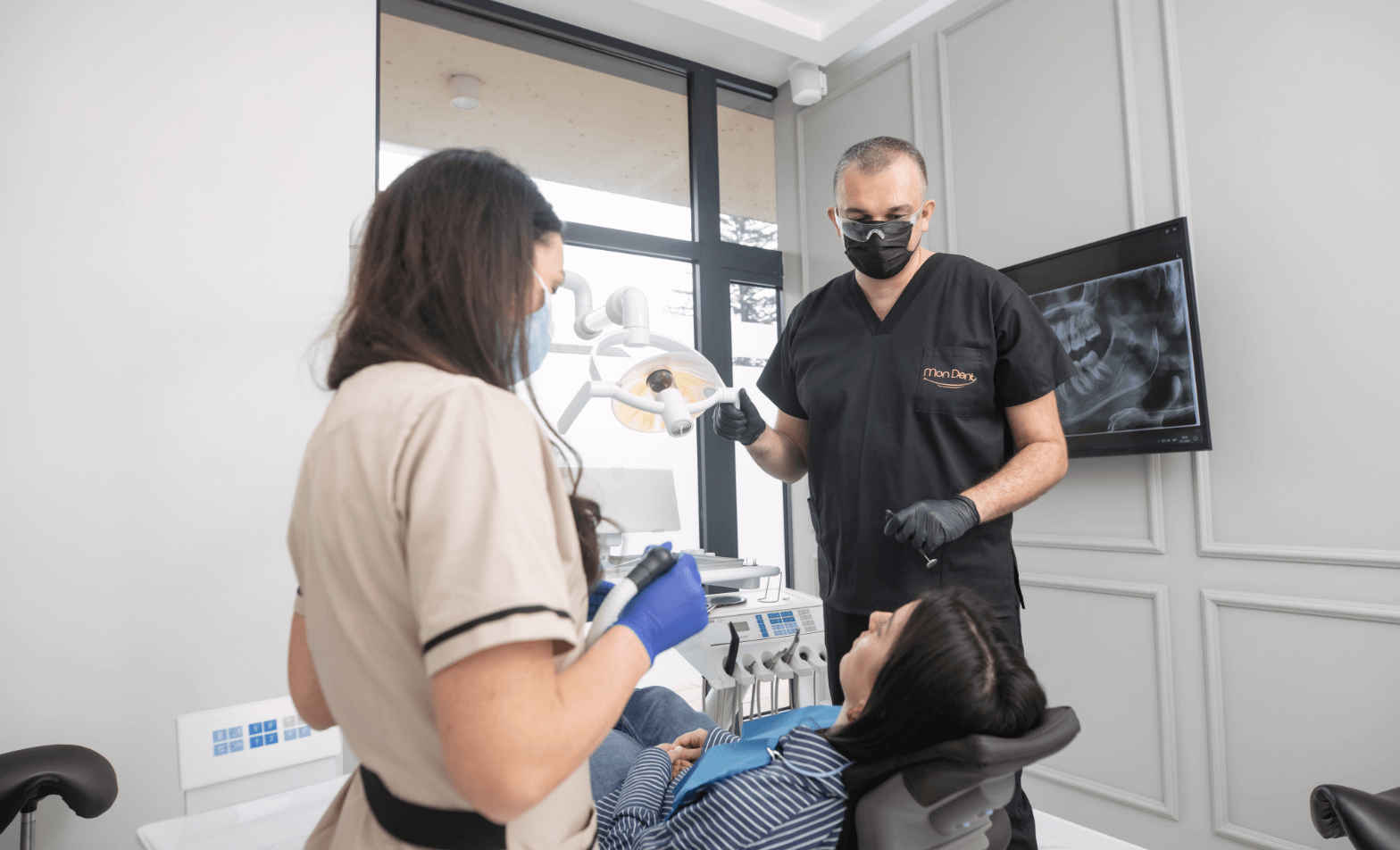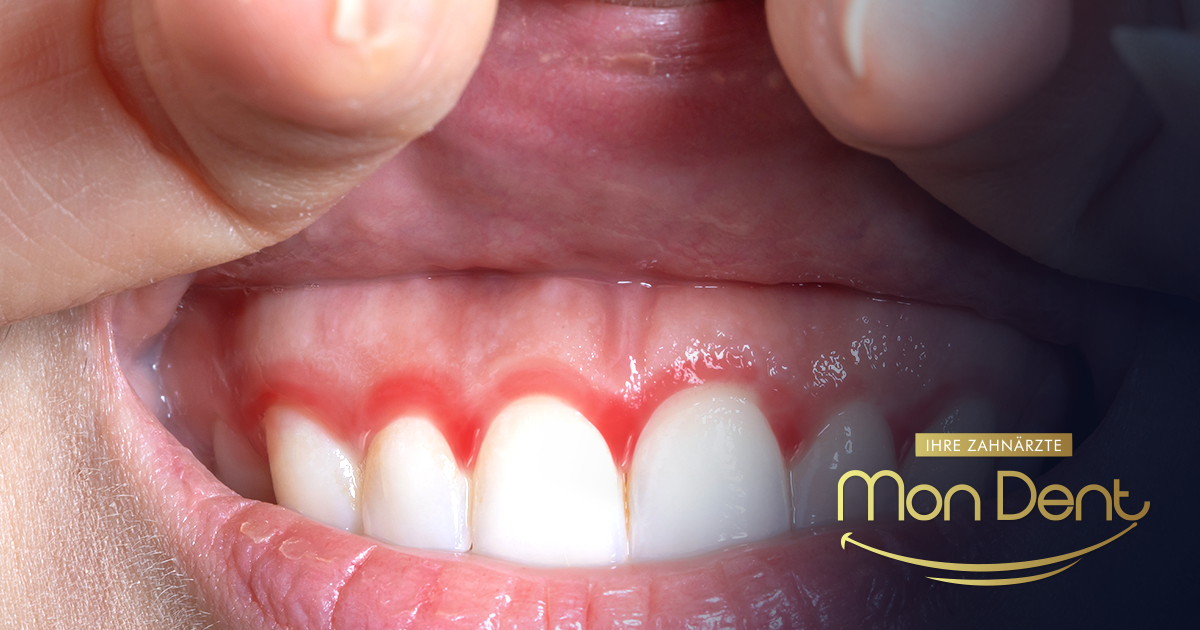Content:
- What is the normal postoperative course?
- When simple inflammation becomes a problem
- Gingivitis after implant placement
- Gingivitis after dentures, crowns, bridges, tooth repairs
- Recognizing alarming symptoms
- Specific tips for home care
- The dentist's job in gingivitis
- Conclusion
Introduction
If you experience gum inflammation after a tooth extraction or implant placement — the quickest and most effective measures are to gently rinse your mouth with salt water, apply cold compresses to reduce swelling, and it is very important to contact your dentist. If signs of infection appear (pus, fever, progressive pain), your dentist may prescribe antibiotics or perform a professional cleaning/drainage.
Gingivitis after an intervention is often expected and transient, but the same clinical picture sometimes indicates a complication (dry socket, peri-implantitis, reaction to excess cement). We will explain what you can expect in the first few days, what home measures to take immediately, which symptoms you should not ignore, and how to prevent the most common problems.
MonDent dental office offers all types of dental services performed by top dentists with many years of experience. Leave your dental problems to us. our professional team!
What is the normal postoperative course?
After a tooth extraction or gum surgery, the body begins the healing process. It is normal to expect:
- Pain and sensitivity in the area of the procedure for the first 48–72 hours. The pain usually decreases each day.
- Swelling (edema) which often peaks 48–72 hours after the procedure, then gradually declines. This is a standard part of the body's inflammatory response.
- Slight bleeding or discharge in the first 24 hours; after that, bleeding usually stops, but may occasionally occur when eating or brushing your teeth.
- Slightly elevated temperature may occur, but a high temperature (>38 °C) or fever is a sign that should be checked.
After the first day, you can start with gentle salt water rinses (a teaspoon of salt in a glass of warm water) several times a day, but avoid vigorous rinsing for the first 24 hours so as not to remove the protective clot in the alveoli.
When simple inflammation becomes a problem
Although pain and swelling are expected, you should watch out for signs that indicate a complication:
- Pain that gets worse instead of gradually easing (especially around 4–6 days after extraction) may indicate an infection.
- Appearance of pus, bad breath, or yellow discharge are a clear sign of infection.
- Severe gum inflammation that spreads or prevents normal swallowing/mouth opening requires immediate evaluation.
- Prolonged bleeding from the wound despite and rest.
A special complication in tooth extraction is dry socket — a very painful condition that occurs when the protective clot is pulled out or fails to form, exposing nerve endings in the alveoli. Prevention includes avoiding the use of straws, smoking, and heavy douching for the first few days.
Gingivitis after implant placement
Implants are a common and successful way to replace teeth today, but they come with their own set of risks. Peri-implantitis is a chronic inflammatory process that affects the gums and bone around implants and can lead to loss of peri-implant tissue if left untreated.
What to pay attention to after implant placement
Early complications after implant placement They can include infection in the area of the surgery, swelling and pain — typically similar to those after tooth extraction, but around the implant there is a risk that the inflammation will become chronic if plaque and bacteria continue to build up.
Risk factors for peri-implantitis include: poor oral hygiene, smoking, inadequate removal of cement from under the crown, history of periodontal disease, diabetes and some systemic diseases. Regular check-ups and professional cleaning are key to early detection.
If you experience increased pain, persistent swelling, pus, or fever in the weeks following the procedure, be sure to contact your dentist — early intervention can often prevent permanent damage to peri-implant structures.

Gingivitis after dentures, crowns, bridges, tooth repairs
Gum inflammation under dentures
Dentures (partial or complete) can irritate the mucous membrane and cause inflammation if they are poorly fitted or if food particles remain and cause infection. If the inflammation is mild, temporarily reduce wearing, clean the denture and the area, and see a prosthetist for adjustment. In case of severe swelling, pain, or pus – seek urgent medical attention.
Gingivitis under a crown / gingivitis under a bridge
If a crown or bridge is not properly positioned, excess cement left behind under the crown can cause chronic gum inflammation. Symptoms include redness, bleeding when brushing, and sometimes pain. A dentist can remove the excess cement and clean the area – often the symptoms will go away. Regular check-ups and professional removal of the cement can reduce the risk.
Gingivitis after tooth repair
Grinding and filling sometimes irritate the surrounding tissue; symptoms usually resolve within a few days. If severe inflammation, swelling, fever, or pus occurs, it is possible that bacteria have entered or a reaction to the material has occurred, so a follow-up examination is necessary.
Recognizing alarming symptoms – when to seek help immediately
Contact your dentist or emergency room immediately if you have:
- Severe, progressive pain that does not respond to medication.
- Increased swelling of the face or neck that makes breathing or swallowing difficult.
- Fever and/or chills with oral symptoms.
- Pus coming out of a wound or bad breath despite hygiene.
- Bleeding that does not stop after 30–60 minutes of adequate pressure.
These signs may indicate the spread of infection and require immediate evaluation and treatment.
Specific tips for home care
The first 24 hours
- Rest and avoid exertion.
- Cold compresses on the outside (20 min on/off) help reduce swelling.
- Do not rinse vigorously, do not use a straw, do not smoke and avoid alcohol.
- If a stitch or clot has been placed in the wound, do not try to remove it yourself.
After 24 hours
- Start with gentle salt water rinses several times a day (especially after meals). The salt helps reduce bacteria and soothes the mucous membranes.
- Groom the specific area with a soft-bristled brush — gently, without rough manipulation.
- Eat soft, cool to lukewarm foods for the first few days (soups, purees, yogurt).
- Continue taking prescribed medications (antibiotics, analgesics) as directed by your dentist.

Medications and analgesics
Typically, ibuprofen is recommended for pain and swelling (unless you have contraindications) or paracetamol (acetaminophen). Always check with your doctor/dentist for possible interactions and dosages.
Antibiotics are not routinely given. They will be prescribed by the dentist if there is clinical evidence of infection or a particular risk.
Implant care
After implant surgery, strict oral hygiene and follow-up examinations are essential for the prevention of peri-implantitis. Use interdental brushes around the suprastructure and rinse as directed by your dentist. Regular professional hygiene removes plaque and prevents chronic inflammation.
What dentists do: diagnostics and therapy
When a patient presents with symptoms, the dentist will usually:
- He or she will perform a clinical examination — looking for redness, swelling, pus, and checking temperature and general signs.
- If necessary, he takes an X-ray to check the condition of the bone and the position of the implant/root.
- If there is an infection, he or she may prescribe an antibiotic and rinse/clean the wound.
- In the case of peri-implantitis: therapy may include mechanical cleaning, antiseptic procedures, local or systemic antibiotics, and sometimes surgical treatment. In the long term, supportive periodontal therapy and plaque control are essential.
Conclusion
Most postoperative gingivitis after tooth extraction or implant placement is expected, short-lived and can be successfully controlled with proper care at home. However, there are clear signs such as progressive pain, pus, fever, difficulty breathing/swallowing, which require urgent dental evaluation. Special attention should be paid to implants and fixed suprastructures (onlays, bridges), as chronic inflammation around these restorations (peri-implantitis, cement reaction) can lead to major problems if ignored.
Regular check-ups, good oral hygiene and following your dentist's instructions are the most effective prevention!
Contact the MonDent dental office and make an appointment at a dentist who meets your needs.
FAQ
How long does gingivitis last after tooth extraction?
Most acute symptoms (pain, swelling) improve within 3–7 days. If symptoms escalate after 4–6 days, be sure to contact your doctor.
Is severe gum inflammation normal?
Severe inflammation that does not subside or worsens is not normal and requires examination.
Can I wear a denture if I have an infection?
If the denture irritates the area, temporarily reduce the size or stop wearing it until you are examined. Never force yourself to wear a denture that causes pain.
Should the implant be removed if inflammation occurs?
Not necessarily. Many cases of peri-implantitis can be treated conservatively if detected early. In advanced cases, removal may be an option. Early detection and treatment increase the chances of preserving the implant.





